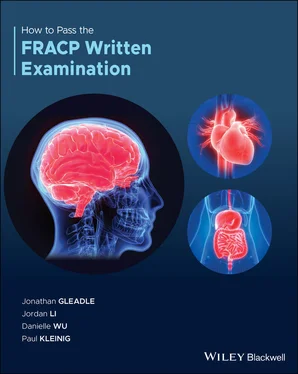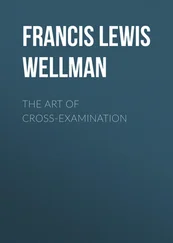Melanoma is a molecularly heterogenous malignancy. Malignant transformation into melanoma follows a sequential genetic model that results in constitutive activation of oncogenic signal transduction. Systematic genome‐wide screening has identified missense mutations in BRAF , a component of the mitogen activated protein kinase (MAPK) pathway in 66% of melanomas. BRAFv600 mutation is a typical feature of benign naevus formation. Further progression into intermediate lesions and melanomas in situ requires additional mutations – for example, mutations in the telomerase reverse‐transcriptase (TERT) promoter. To gain invasive potential, tertiary mutations in cell‐cycle controlling genes (cyclin‐dependent kinase‐inhibitor 2A [CDKN2A]) or chromatin‐remodelling (AT‐rich interaction domain [ARID]1A, ARID1B, ARID2) are required. Metastatic melanoma progression is associated with mutations in phosphatase‐ and‐tensin homologue (PTEN) or tumour‐protein p53 (TP53).
BRAF inhibitors such as dabrafenib and trametinib are standards of care in patients with stage‐3 BRAF mutated melanoma. Several randomised phase 3 clinical trials have shown objective response rates to BRAF inhibitors of approximately 50%, which can be increased to 70% when combined with MEK inhibitors.

Schadendorf D, van Akkooi A, Berking C, Griewank K, Gutzmer R, Hauschild A et al. Melanoma. The Lancet. 2018;392(10151):971–984.
https://www.thelancet.com/journals/lancet/article/PIIS0140-6736(18)31559-9/fulltext
6. Answer: B
This patient has melanoma in the context of diabetic neuropathy which may have impact on the wound healing. However, the Breslow thickness is 4 mm and she will require a wider local excision with margins of 2 cm. The guidelines for surgical margins of melanomas can be seen in the table below.
Sentinel lymph node biopsy (SLNB) is a surgical technique to identify low volume metastatic disease within the draining lymph node basin in patients undergoing treatment for primary melanoma. SLNB is a staging procedure to identify patients with a positive draining nodal basin and thereby minimise the morbidity associated with elective lymph node dissection in patients who may not require this procedure. Moreover, it provides prognostic stratification. Numerous studies have consistently demonstrated that the status of the sentinel lymph node (SLN) reflects the status of the entire draining nodal basin as measured by elective lymph node dissection. The recently revised American Joint Committee on Cancer (AJCC) staging system (8th edition) requires a SLNB for patients with primary melanoma >1 mm in thickness and for some patients with thin melanomas but with high risk factors in order to perform microstaging of the lymph node basin and accurately allocate a pathological disease stage.
SLNB involves pre‐operative lymphoscintigraphy to identify the draining nodal basin for the anatomical location of the primary melanoma. This is followed by intraoperative intradermal injection of the melanoma site with patent blue dye. Intraoperative exploration through a small incision allows the identification of SLNs. A node is considered a SLN if it has tracer uptake and/or is stained blue. This dual modality approach allows the successful identification of a SLN in over 95% of patients. SLNs are carefully examined pathologically to identify metastasis.
| Breslow thickness |
Surgical margin for excision |
| Melanoma in situ |
5 mm |
| Melanoma <1 mm |
1 cm |
| Melanoma 1–2 mm |
1–2 cm |
| Melanoma 2–4 mm |
1–2 cm |
| Melanoma >4 mm |
2 cm |

Gyorki D, Barbour A, Mar V, Sandhu S, Hanikeri M. When is a sentinel node biopsy indicated? – Clinical Guidelines Wiki [Internet]. Cancer Council Australia: Clinical Guideline Network. 2020 [cited 15 February 2020]. Available from:
https://wiki.cancer.org.au/australia/Clinical_question:When_is_a_sentinel_node_biopsy_indicated%3F
7. Answer: D
Porphyria is a predominantly inherited metabolic disorder resulting from a deficiency of an enzyme in the heme production pathway and overproduction of toxic heme precursors. There are three principal types of porphyria: porphyria cutanea tarda, (PCT), acute intermittent porphyria, and protoporphyria.
This patient’s clinical picture is consistent with PCT: the most common porphyria affecting 5–10 persons per 100 000 people. The cause is inhibition of the fifth enzyme in heme biosynthetic pathway: uroporphyrinogen decarboxylase. PCT is associated with several precipitating factors such as haemochromatosis (53%) and uroporphyrinogen decarboxylase mutations (17%), as well as hepatitis C (69%), alcohol (8%), tobacco (81%), oestrogen (6%), and HIV (15%). Typically, patients are >40 year old and male. The clinical picture is of painless blistering lesions in sun exposed areas, typically the back of the hands. Sun exposed skin can be friable, scarred, or develop hypertrichosis. Remission may occur in the winter months, if sunlight exposure is decreased. Urine is brown–reddish, due to excess uroporphyrin. PCT is usually associated with mild abnormal LFTs. Advanced liver disease is uncommon at initial presentation but may be seen in older patients with recurrent disease. Diagnosis is made with an elevated urine or plasma porphyrin with predominantly uroporphyrin and heptacarboxyporphyrin. Erythrocyte porphyrins are usually normal. A total plasma porphyrin measurement may be most useful for initial screening. A skin biopsy reveals subepidermal bullae. Wood’s lamp examination of the urine shows orange red fluorescence.
First line treatment for PCT involves addressing modifiable risk factors: treating hepatitis C or HIV if present, and restricting alcohol, tobacco, and oestrogen. These factors, in combination with hepatic iron depletion via phlebotomy or iron chelation to a target ferritin at the low end of the normal range, often produces remission. Hydroxychloroquine is an alternative to iron depletion. Once in remission, patients may relapse, especially if they drink >4 standard drinks/ day or continue smoking, so urine or plasma uroporphyrin should be measured annually.
Acute intermittent porphyria is an autosomal dominant partial deficiency of the third enzyme of heme synthesis: porphobilinogen deaminase (or hydroxymehtlbilane synthase). 90% of patients are females, typically presenting aged 18–45 with a prodrome of days of severe fatigue and lack of concentration, then worsening abdominal pain, nausea, vomiting, afebrile tachycardia, and neurological signs including weakness dysthesia, and seizures (20% of patients). Risk factors include cytochrome P450 inducers, oral contraceptive pill, and severely restricted caloric intake. Abdominal exam is often unremarkable and blood tests usually show mild liver derangement and hyponatremia. Diagnosis requires elevated porphobilinogen in urine and plasma, often up to 10–150x normal. Urine colour can be unremarkable, however if exposed to light can turn dark amber when heme precursors form uroporphyrin‐like‐pigments. Treatment is primarily supportive: fluids (preferable 10% dextrose in 0.45% saline), antiemetics, analgesics, and anticonvulsants. Of note, many anticonvulsants are not safe in acute porphyria, including phenytoin, valproic acid, carbamazepine, clonazepam. Intravenous heme is the only specific treatment but is not widely available.
Читать дальше














